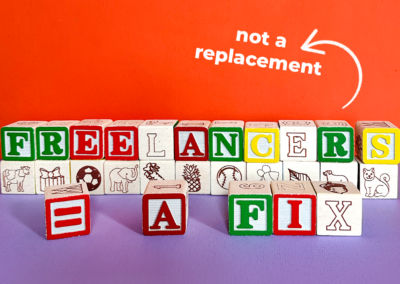Putting aside all the not-so-great things that happened in 2020, one bright spot is the explosion in popularity of the email newsletter. Platforms like Substack and Revue are enabling a new class of creators with intuitive tools to easily share their passion and expertise on any topic you can imagine. With a direct appeal to the audience and an intimate tone you rarely get when reading online, the best email newsletters feel like a special gift in your inbox designed to make you smarter, wiser, and more informed.
Driven largely by journalists seeking more sustainable sources of revenue as the media landscape continues its long decline, newsletters have become the latest example of what’s possible in the distributed future of work. However, the medium accommodates many different types of creators, and for freelancers, entrepreneurs, and other independent marketers, starting a newsletter is a great way to build an audience online. On social media, you’re at the mercy of algorithms that show your content to a small percentage of followers at any given time. Email newsletters give you a direct connection to subscribers — because they’ve given you access to their inbox, you can be sure they will see your posts.
Newsletters are also a way to get in the habit of building in public, which helps attract customers, collaborators, investors, friends, and like-minded people to your network.
Here’s a short, actionable guide to getting started.
1. Pick your topic
From journalistic deep dives to personal writing to curated link roundups, there are many ways to approach a newsletter. Pick a topic that will keep you engaged! Writing a newsletter is an ongoing process, so make sure you choose something that you want to continue learning and sharing about.
That said, you can always evolve. I started writing my newsletter, Tiny Revolutions, a couple of years ago because I was going through a depressive episode. I was frustrated at the lack of candid writing about the impact these episodes had on my life, so I decided to share my experiences in the hopes of helping others. I’m in a much better place now, but I still have a lot to say about the practice of getting and staying mentally healthy and how that plays out in both personal and professional contexts. That curiosity, along with the response from my readers, is what keeps me going.
2. Think about who you’re writing to
Whom do you want to read your newsletter? Potential customers? People in your field? Ex-lovers who spurned you and who you’d like to show that you’re doing amazing, thank you very much? Keeping your target audience in mind when you’re writing ensures that your content will resonate.
I’ll even go so far as to suggest having one ideal reader in mind when you’re drafting your emails. Think of this person as a person in need — they signed up for your newsletter because you know something they don’t, and they’re excited to hear what you have to say about it. This helps manage your expectations and heads off impostor syndrome. Can you find something helpful or interesting to share with your audience? Then just say that. It can be that simple.
3. Choose a platform
In addition to Substack
and Revue, there are a ton of different options for publishing newsletters online, many of them free. You can also look at ConvertKit, MailChimp, and Ghost, all of which are easy to use and geared at helping you publish quickly and consistently with a well-designed output.
Don’t overthink this one. Pick a platform that seems intuitive and know that if you find one you like better, you can always take your email list and bounce.
4. Get your first subscribers on board
Do you know people with email addresses? Great! Sign them up. I sent out my first issue to anyone I thought might be interested — a motley crew of friends, colleagues, parents (hey, mom!), siblings, aunts, uncles, second cousins, old roommates, people who once commented on my blog in 2006, etc. I made it clear that there was no pressure to stay subscribed, and luckily a lot of them stuck around. Here are a few other ideas for places you can find early subscribers:
- Your social media channels (obvious, sure, but worth pointing out)
- Any professional groups or online communities you belong to
- Any email lists or group chats you’re part of
- Adding a link to your sign-up page in your email signature
Don’t be afraid to self-promote! People can and will unsubscribe if they’re not feeling it, and that’s just part of the process — try not to take it personally. Pro-tip: turn off email notifications for when someone unsubscribes. Trust me on this one: you really don’t need to know.
5. Enjoy the ride
In the words of inveterate newsletter writer Austin Kleon, Keep Going!. Writing a newsletter is an exercise in exploration and endurance, so keep in mind that it will take time to hone your voice, crystallize your topic, and figure out what resonates best with your audience. Be patient and remember that it takes a while to hit your stride, and the longer you do it, the more rewarding it becomes. Above all, enjoy the process. If you keep at it, you’ll not only learn a lot more about your topic, but you’ll open doors for yourself personally and professionally that you never would have otherwise.
Go Deeper:
- Newsletter Stack is a great place to discover popular newsletters on topics that interest you — other newsletters are a great source of ideas and inspiration for your own content.
- Compound Writing put together a practical guide to getting your first 1,000 subscribers.
- Excellent tips from Ron Hogan’s newsletter, Destroy Your Safe and Happy Lives, on cultivating a mental skill set that will help you avoid writer’s block and publish regularly.
- Patricia Mou’s list of 12 lessons she’s learned from writing 25 newsletters.



